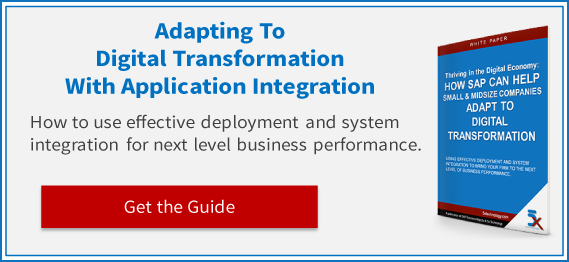Solid business intelligence data is the key to valuable analysis insight about your company by providing high-level visualization to key decision-makers inside and outside of your organization. In short, business intelligence should produce informed decision-makers and help them turn strategies into action and increase overall business performance .
When it comes to department performance, the importance of identifying underperformance and the reasons why cannot be overstated. Whether identifying too late, or worse, not identifying the source of underperformance at all, the result to the company's growth strategy can mean the difference between record profits and dismal losses.
Any business intelligence software tool worth using has functionality to personalize the right data that is catered specifically to a person's role which allows them to stay focused on the company's unique strategy and growth plan. Despite this, many companies either don’t engage business intelligence tools, don't utilize the full capabilities to provide the right data, or are providing generic dashboard report designs without personalizing for leadership and stakeholders.
As a result, when a department is underperforming, a company’s CFO and financial leaders are not able to expose the “why”- in essence, the cause of the underperformance. This ultimately leads to missteps and guesswork in resolving the reasons for the underperformance, which can then, in turn, extend the problem(s) and short change the financial growth of the company.
This article explores how to properly use business intelligence tools to identify underperformance so the right correction can take place by making a strategic solution decision.
Using BI Tools for Business Performance Management
Business intelligence tools provide a way to tap into your company's rich information resources and create the unified information infrastructure critical to running a business. In the world of finance, you must be able to clearly know, control and report what is happening and what has happened.
Specifically focusing on what has happened, a solid strategy cannot be formulated if roadblocks to success are not identified and corrected. If one or more departments are underperforming, that might be apparent to anyone adept at financial analysis. However, identifying a lack of performance does not mean that the reasons for the underperformance is identified.
How can something be corrected if the source of the performance issue isn't identified?
Managing business performance requires BI tools that are able to offer broad data connectivity and provide the dashboard reporting and design capabilities to display the data for the audience and the decisions their role requires. The right data and how it is visually presented can make analysis a more streamlined process, and that carries to identifying opportunities, deficiencies and solutions to improve performance--all in one tool.
Following is a list of SAP BI reporting tools and their primary function and features:
- Crystal Reports: One of the leading reporting tools for SAP BusinessObjects is Crystal Reports. We provide services for multiple Crystal Reports versions, including Crystal Enterprise and Crystal Analysis.
- SAP Performance Management products help businesses drive strategy, plan and budget for the future, while providing intuitive dashboards and scorecards .
- BusinessObjects Enterprise Information Management (EIM) program delivers business intelligence that can be trusted. It is a combination of strategies, practices and open technologies for delivering trusted, integrated and timely information needed to make the best business decisions .
- BusinessObjects Data Integrator is a tier-1 extract, transform, and load (ETL) tool that allows customers to build a data mart or data warehouse. With Data Integrator, customers can build a trustworthy data foundation for Business Intelligence .
- The BusinessObjects Data Federator product helps customers address two important issues: accelerate multi-source Business Intelligence query performance and complement ETL tools. (extract, transform and load)
- BusinessObjects Data Quality: BusinessObjects data quality products allow you to profile, cleanse, and continuously monitor your data. Also, Data Integrator and Data Federator provide capabilities for profiling, validation and auditing data.
- BusinessObjects Rapid Marts: BusinessObjects Rapid Marts provides packaged data integration for enterprise applications such as SAP, PeopleSoft, Oracle, and Siebel.
- BusinessObjects Metadata Manager is a new product that actively collects and unifies BI, ETL, and third-party metadata. The goal is to allow organizations to easily view and analyze metadata through pre-built metadata reports.
- BusinessObjects Composer: Your IT team can efficiently design and manage "bulletproof" ETL processes since the most critical part in designing and implementing a data warehouse is the extract, transform, and load design process.
A Lack of Business Intelligence Leads to Misdiagnosis of Underperformance
Without proper business intelligence tools, company leadership is making decisions based on gut instinct or loose data. There are no firm numbers or statistics to back up important decisions which can lead to the wrong decisions that can have a big impact on the bottom line.
It places leadership in the inferior position of only being reactive instead of having real time data to take a proactive approach to discovery and diagnosis. Additionally, a performance misdiagnosis can lead to the same repetitive underperformance, which long term can have the same or even more severe consequences to company growth than no diagnosis or resolution in the first place.
Utilizing data for visualization can provide multiple benefits to a company today including:
- The ability to absorb information in new ways that are more constructive
- Enable you to visualize relationships and patterns between business and operational activities
- Identify and act on emerging trends or deficiencies faster
- Manipulate and interact daily with data
- Foster a new business language
Using Business Intelligence Data to Identify a Solution Pathway
Business intelligence data is the best tool to shape your company goals according to defined KPIs, align your priorities and ultimately be a catalyst to identifying and acting on your strategy or solution. Thus, companies should no longer have to "guess" why a department is not performing to an expected standard or level. Companies should be able to see the data that will lead to identifying a solution to any problem.
Today's most successful companies are using business intelligence to fine-tune their decision-making process. It is much more than simple reporting; it is a set of tools that allow leaders to identify areas that are underperforming and could benefit from some changes as well as help to identify key products or product initiatives that might be beneficial.
Today's BI tools make it possible for company leaders to delve right into valuable information in real time instead of looking at past data to identify performance issues. Business intelligence data places leadership in a proactive stance instead of a reactive position.
Download our complimentary solution-based SAP White Paper Thriving in the Digital Economy by Adapting to Digital Transformation, and learn more about how the right data connectivity and dashboard deployment can help manage business performance.




